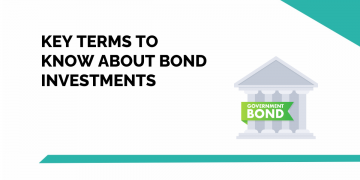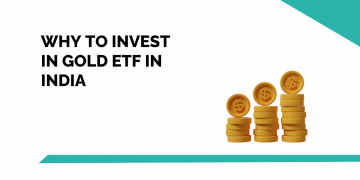The stock market fear is a real thing, and why won’t it be?
Among the uncertainties and inevitable volatility, how can one trust the market cycle and go with it?
Especially when it’s the matter of our hard-earned money being put at stake!
After all who wants a loss right?
People have lost thousands of rupees in stock market downfalls in the past.
Due to this, whenever the stock market crashes, people incline towards panic withdrawal which in turn leads to more losses. It a vicious circle.
So, what’s the solution? Patience and time-tested strategies to prevent further loss of capital and deal with stock market fear.
| Table of Contents |
|---|
| Don’t Try to Reach the Market Bottom |
| Don’t Make Panic Withdrawals |
| Avoid Crowd Biases |
| Diversify, Diversify and Diversify |
| Access Your Risk |
| Conclusion |
Important Ways to Deal with Stock Market Fear
Let’s unfold some of the easiest and best ways to deal with this stock market fear:
1. Don’t Try to Reach the Market Bottom:
The most basic method of investing in the share markets is value investing.
The one endorsed by the multi-millionaire investor Warren Buffet wherein you just buy stocks when the value is less and sell when it increases.
Of course, this sounds like a good strategy to deal with stock market fear. However, in doing so, some people put lump-sum investments at one point of time. This should highly be avoided.
No doubt, there are numerous types of stock trading and investing strategies, you must be very careful. You need to put some money at one low and some at the other till you finally reach the lowest point and the recovery starts.
Let’s understand with an example. Nifty at the start of this year went from 12,000 to around 8500 in two months.
So, for a smart investor 12,000 to 11,000 a direct dip Thursday, 26 March 2020 of 1000 points was a clear indication of the start of a soaring market and to start putting his money.
In this case, he would put some money at 11,000 some at 9000, and so on until it is showing a bearish behavior.
2. Don’t Make Panic Withdrawals:
When markets start going south, people tend to panic and withdraw their equity investments due to stock market fear. When you make equity long-term investments, they are there with a set time frame and goal.
If you withdraw these at a time of downfall, you lose both ways. Firstly, you incur a loss in capital value and secondly, the goal of that investment gets ruined.
For example, you had a SIP of Rs. 5000 per month to buy a house in 5 years.
Some of the value of your portfolio dropped and you panic withdrew all the money. Where does it leave you?
With a capital loss, incomplete goals and to top it all, if the fund starts rising again (which they usually do in the first 12 months of dip), you would have the regret of missing the bus.
Therefore, unless it is an emergency, it is advisable not to redeem your equity investments. Giving time to your investments to grow is ardent. The capital market is NOT a quick money-making scheme. It takes persistence for the wealth to create and grow.
Learn basics of trading and investing with Stock Market Made Easy by Market Experts
3. Avoid Crowd Biases
What is the similarity between the government and the share market? Everybody has an opinion on them, irrespective of knowledge or position.
People tend to talk about the share market as experts when in reality they’re not. There are all kinds of rumors that flow within a corporate office which might have even started with one person’s opinion. Don’t bend to such viewpoints blindly. Doing your market research for your portfolio is very important.
Remember the famous quotation from the investing genius: “Be fearful when others are greedy and greedy when others are fearful” -Warren Buffet
4. Diversify, Diversify and Diversify
We can not stress this enough. This is the most important strategy that helps mitigate stock market risks. To diversify means putting your wealth in different assets so that even if one fails to procure returns, the entire portfolio would not bear losses. It is the first rule of investment. “Never put all your eggs in the same basket.”
Different products have different types of investment risks. Including a high-risk product with a low-risk one creates a balance in your portfolio. That is why a combination of equity, debt, and cash is created to carve out a perfect portfolio. It might even have real estate or gold. However, having one single thing among all of them, poses a big threat.
Let’s look at an example. Suppose you invested in only real estate. You took a high-yield property which was bound to grow in value keeping all factors in mind. So, you thought it was okay to keep all your money in one place, one very profitable place.
Now 3 years later, the country experienced an earthquake. Nobody could see it coming right? In the disaster, your entire property is ruined and you experience a high capital loss.
However, if you would have assigned some money in the equity markets, some in gold, etc., the profits made from these could’ve compensated this inevitable loss. Always diversify your portfolio according to your goals and risk appetite.
Which brings us to the last point, know your risk appetite.
5. Assess Your Risk
Risk appetite refers to your own capability of taking risks. It varies for every person depending on the phase of life they’re in. If you’re a student or a young person, you don’t have any mouths to feed or home to run, so you can take high-risks. However, in later parts of life, responsibilities grow. One needs to plan their marriage, education, child education, and then finally, retirement. The risk-taking ability decreases with time and this leads to stock market fear.
Therefore, before investing your money carefully look at the product you’re choosing, the risk model it has, and if it matches your risk appetite. The stock market may have its in-built risks but taking careful steps can land you in good profits.
Conclusion
It is no doubt that investing in the stock market is scary, and subject to huge risks.
However, if you keep your calm and learn to make rational decisions and implement these strategies, it can be a smooth sail.
Successful investors have created huge wealth by just making the right decision at the right time. If you always have stock market fear in you, how would you know you’re not one of them? So, don’t wait for one day, start now and see where it gets you!
Happy investing!









Good post!
Hi,
We are glad that you liked our blog post.
Thank you for Reading!